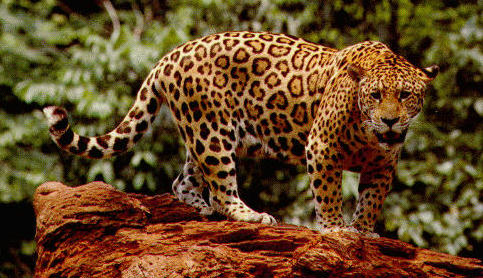

 The Accurate Reloading Forums
The Accurate Reloading Forums  THE ACCURATE RELOADING.COM FORUMS
THE ACCURATE RELOADING.COM FORUMS  Hunting
Hunting  South American Big Game Hunting
South American Big Game Hunting  Scotland photos here because my amigos are here
Scotland photos here because my amigos are hereGo  | New  | Find  | Notify  | Tools  | Reply  |  |
| One of Us |
Briefly. I always wanted to hunt Scotland. The trip to Scotland was great; a truly wonderful and beautiful country. The hunt was very good and I did take two very nice trophies. My travels after the hunt to the western islands, most especially Islay (Eyelah) was a bit rushed but well worthwhile. When I bought the hunt I thought it was for a free range stag. Well, I guess one could still call it that, because the estate I hunted on was very large, some 3,000 acres. But the chances of not getting a stag were next to none. There were many red deer on the estate as well as fallow, sika, roe, european elk, Soay sheep, Russian hogs and one lone Pere David bull. (That should not be shot) I enjoyed the hunt but in entering mine in SCI I did enter them as "estate." I did find out that even though my beautiful stag (17 points) was a typical Scottish hill stag in antler configuration, it could not be entered as such. SCI has drawn a line between Glasgow and Edinburgh; any stag south must be entered as a European stag, any above as Scottish red stag. And I can understand that having seen red deer, European elk, sika, fallow, etc., easily able to inter mix. I also learned about European hunting...unless you have an unlimited budget, before you pull the trigger best to ask your guide how many dollars/pounds/Euros, etc., that critter will cost. Notwithstanding the above it was a fine experience; good lodging on the estate; excellent dinner meals at the restaurant in the small Inn, Lochinvar, at Dalry, and good chaps to be with. First things first....the distillery at Bowmore. 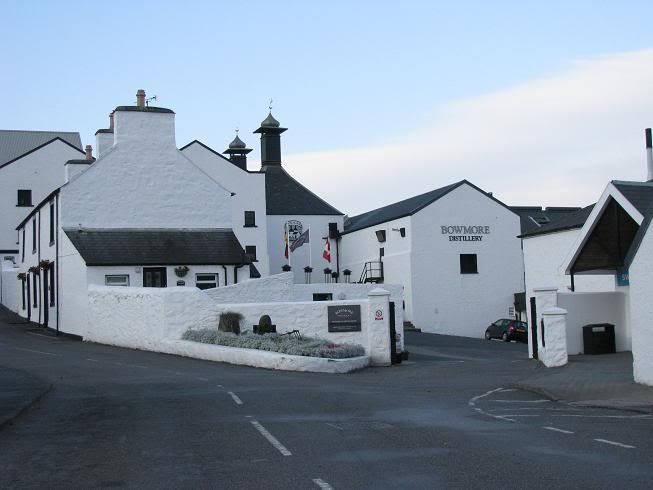 Words to the wise....  Pere David buck  Red stags on the hillside 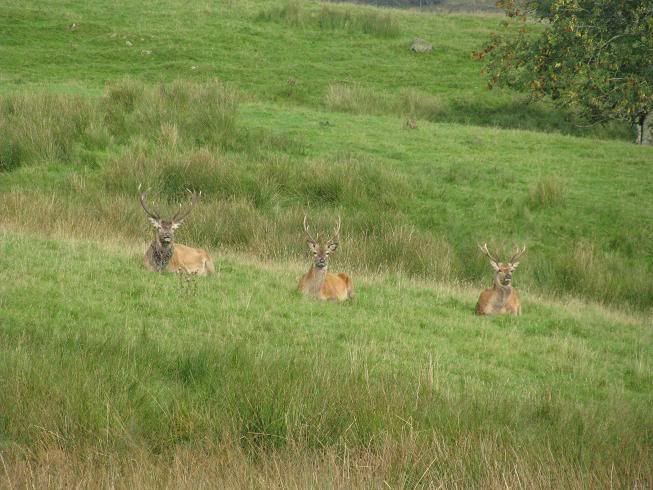 Stalking through the hills; wihtout my "Moses" stick it would be tough for me. 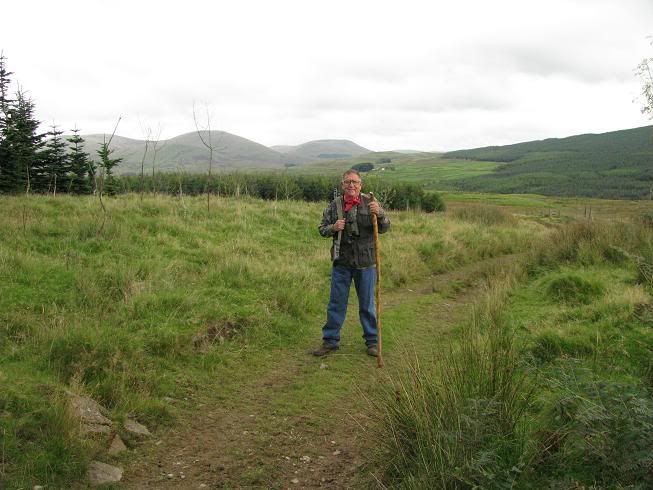 Flock of Soay sheep 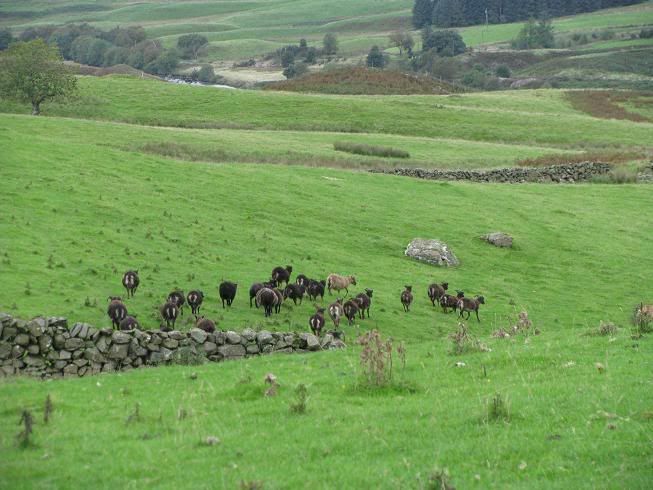 My stag 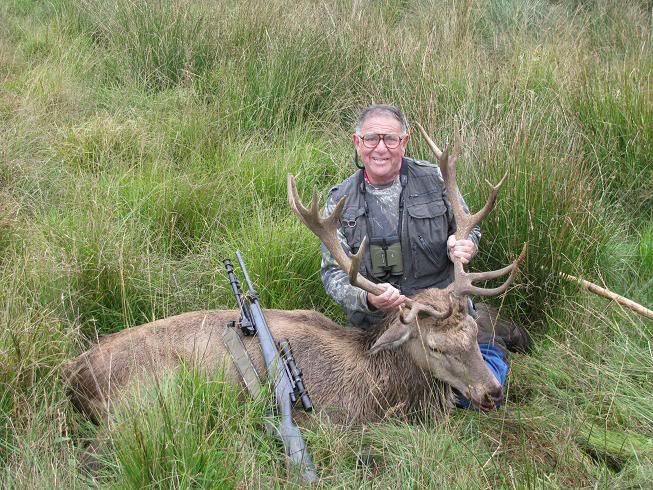 Martin gave me this knife in Argentina; first chance to use it. 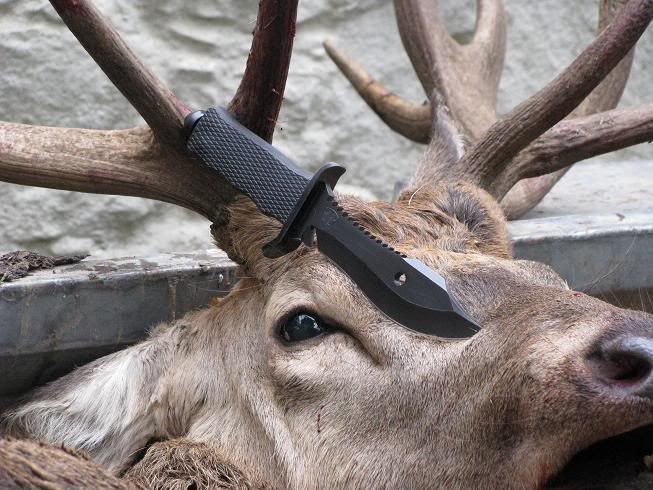 Soay ram 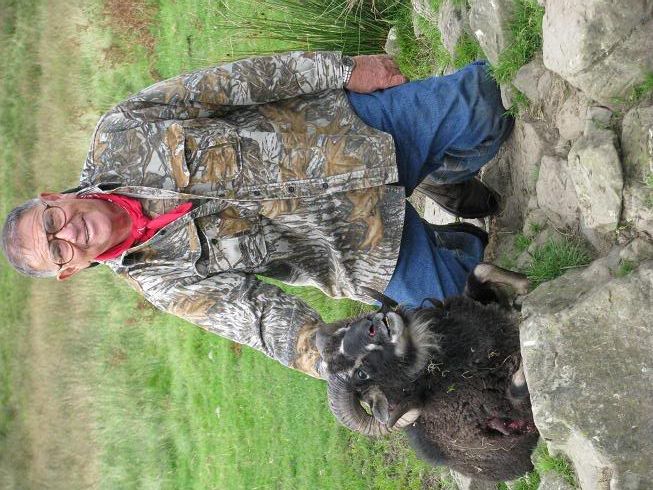 Soay ram's head 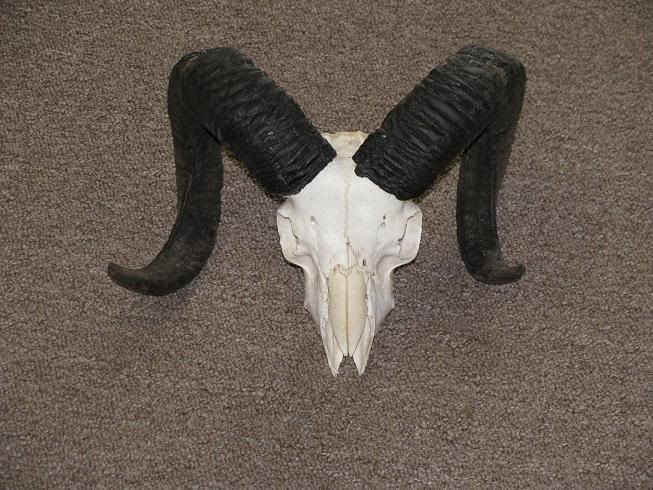 The Inn at Dalry 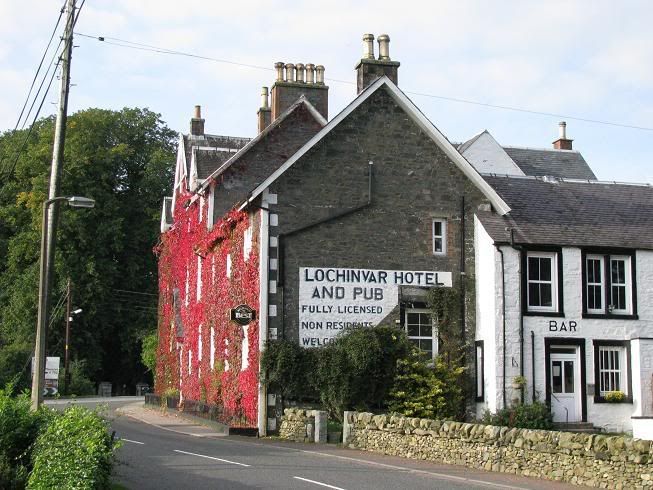 "When you play, play hard; when you work, don't play at all." Theodore Roosevelt | ||
|
| one of us |
We are all honored with your friendship, Bill Congratulations on such a wonderful hunting trip, amigo BTW, I 'm happy you like that humble present of mine !! ------------------------------------------  Μολὼν λάβε Duc, sequere, aut de via decede. | |||
|
| One of Us |
Bill, beautiful country, and very nice trophies. Looks like you're getting in better shape with each hunt. Was it all a walking hunt? Steve "He wins the most, who honour saves. Success is not the test." Ryan "Those who vote decide nothing. Those who count the vote decide everything." Stalin Tanzania 06 Argentina08 Argentina Australia06 Argentina 07 Namibia Arnhemland10 Belize2011 Moz04 Moz 09 | |||
|
| One of Us |
Dear BILL: Thanks for sharing it, very nice pictures !!!, Dont forget to post some pictures of the Deer mount finished, very nice that ram !!! How I wish to was there, Maybe is the first time that a "Yarara" Bite a Scotland Deer !!! I know for a good source that a old Scope Manufacturer soon will release to the European market a new product; a Scope with trophy fee calculator !!! "Every ignored reallity prepares its revenge!" | |||
|
| one of us |
Bill, my friend: congrats in a very successful hunt and a wonderful trip. All Scotland seems to be a marvelous landscape and your deer is well deserved, what with climbing with your damaged knee. | |||
|
| one of us |
Beautifull .photos,congratulations for a traditional hunt ,thanks for sharing with us Bill.Juan www.huntinginargentina.com.ar FULL PROFESSIONAL MEMBER OF IPHA INTERNATIONAL PROFESSIONAL HUNTERS ASOCIATION . DSC PROFESSIONAL MEMBER DRSS--SCI NRA IDPA IPSC-FAT -argentine shooting federation cred number2- | |||
|
| one of us |
Martin did you see the yarara kinfe ,send the photo to CARLOS JUAREZ .Juan www.huntinginargentina.com.ar FULL PROFESSIONAL MEMBER OF IPHA INTERNATIONAL PROFESSIONAL HUNTERS ASOCIATION . DSC PROFESSIONAL MEMBER DRSS--SCI NRA IDPA IPSC-FAT -argentine shooting federation cred number2- | |||
|
| One of Us |
Bill, Looks like you had a great time. The countryside is beautiful and lush, the animals physiques are a testiment to that, what a healthy lot. Your stag is very nice, as is your ram. That rack is sure different on the Pere David bull. Kind regards, Mary Taxidermist/Rugmaker | |||
|
| One of Us |
Steve. Looks can be deceptive. Without my stick I would have had difficulty. I can get down to prone very easily, it is getting back up that is a chore. Perhaps I need to put cross pieces on the stick so I can "climb" up. (I made that stick and it was joined by a pal of mine so that it screws apart and I can take it on the airline. At the top is a leather lined "Y" made from a white tail antler fork.) And yes, you could say it was a walking hunt, although not what one would call a true Scottish hill stalk. We started on foot from the house area. The stalking part was not difficult, and the beauty of it was hearing the stags roar as you walked up the hills and through the woodland. Truly exciting, and I paused at each roar to savor it. Never could get to one of the stags that was announcing his lust to the world. My stag was not taken in the higher country but in the lower sloping meadows. The stalk was easy, the shot about 150 yards, and in some ways anticlimactic. The Soay ram was an afterthought, so to speak, and did provide great sport. With so many eyes to spot you, we ending up following them from one end of the lower slopes to the other, and back again. Oftimes stalking along those wonderful rock hewn fences for cover, or crawling over a grassy hill top for a look. One big problem was they were so well packed together. To shorten the story, after about 4 hours of this, which gave me a chance to seek out the ram I wanted, his pals stepped aside and he was mine. Once home, I needed to find out what the devil was going on with my knees and legs. Off to Tucson. After seven x-rays and two MRI's my specialist, smiling, said: "Bill, I see that you are about the same age as John McCain....that means you have a 75% chance of living through the next four years." Thanks. Back down for more testing end of this month, after my birthday hunt in Texas. Physical therapy started this week and I am hopeful that by the time I return to Argentina I will be able to be "stickless." "When you play, play hard; when you work, don't play at all." Theodore Roosevelt | |||
|
| One of Us |
Leupold has a new range finder....it gives the range in meters, and in the top left area the price in Euros and pounds. All that will be left is for the guide to carry a credit card imprinter. "When you play, play hard; when you work, don't play at all." Theodore Roosevelt | |||
|
| One of Us |
I got to see Bill's trophies last week, and in my opinion his deer is a fine example of a true Scottish stag and not an offspring of the larger subspecies from the mainland that caused SCI to draw that line. Congratulations, amigo. It is a great trophy! Bill Quimby | |||
|
| One of Us |
What a beautiful Stag Bill, congrats! Nice ram too, but that Stag is a fine trophy. I hope you can post some more pics. Thanks, David Gray Ghost Hunting Safaris http://grayghostsafaris.com Phone: 615-860-4333 Email: hunts@grayghostsafaris.com NRA Benefactor DSC Professional Member SCI Member RMEF Life Member NWTF Guardian Life Sponsor NAHC Life Member Rowland Ward - SCI Scorer Took the wife the Eastern Cape for her first hunt: http://forums.accuratereloadin...6321043/m/6881000262 Hunting in the Stormberg, Winterberg and Hankey Mountains of the Eastern Cape 2018 http://forums.accuratereloadin...6321043/m/4801073142 Hunting the Eastern Cape, RSA May 22nd - June 15th 2007 http://forums.accuratereloadin...=810104007#810104007 16 Days in Zimbabwe: Leopard, plains game, fowl and more: http://forums.accuratereloadin...=212108409#212108409 Natal: Rhino, Croc, Nyala, Bushbuck and more http://forums.accuratereloadin...6321043/m/6341092311 Recent hunt in the Eastern Cape, August 2010: Pics added http://forums.accuratereloadin...261039941#9261039941 10 days in the Stormberg Mountains http://forums.accuratereloadin...6321043/m/7781081322 Back in the Stormberg Mountains with friends: May-June 2017 http://forums.accuratereloadin...6321043/m/6001078232 "Peace is that brief glorious moment in history when everybody stands around reloading" - Thomas Jefferson Every morning the Zebra wakes up knowing it must outrun the fastest Lion if it wants to stay alive. Every morning the Lion wakes up knowing it must outrun the slowest Zebra or it will starve. It makes no difference if you are a Zebra or a Lion; when the Sun comes up in Africa, you must wake up running...... "If you're being chased by a Lion, you don't have to be faster than the Lion, you just have to be faster than the person next to you." | |||
|
| one of us |
Nice stag and nice sheep! Thanks for sharing.. And those Pere David stags attracts me more and more.. Anders Hunting and fishing DVDs from Mossing & Stubberud Media: www.jaktogfiskedvd.no ..and my blog at: http://andersmossing.blogspot.com | |||
|
| one of us |
I did it !! and he is quite pleased ------------------------------------------  Μολὼν λάβε Duc, sequere, aut de via decede. | |||
|
| One of Us |
The drawing of the line by SCI from Glasgow to Edinburgh is nonsense. The much simpler CIC splitting of Scottish stags from the rest of the UK with lower medal thresholds is much more sensible. In the UK the red deer are indigenous but supplemented in many areas (including Highland Scotland) by deer introduced from English parks like Warnham or Woburn where the deer are still mostly of UK origin but are genetically superior and produce huge heads. In reality the impact of park deer anywhere in Scotland is tiny and there is no justification for excluding wild reds south of that line as there is a buffer zone between those reds and any reds of a different genetic origin in England. In fact the nearest reds to Scotland are in the Lake District of north West England and are possibly as genetically pure as any reds in England outside the West Country. Although genetics do play a part, the size of the Scottish deer is much more to do with feeding than genetics as when the native Scottish red deer got into newly forested areas of Galloway they immediately started to produce bigger body weights and bigger heads. Indeed some of the very biggest New Zealand red heads are from genetically pure Scottish highland stock. It makes far more sense to exclude deer shot behind a fence, no matter how large the estate, as these are likely to have been fed during the winter which enhances antler growth. Just out of interest the largest wild red deer ever known in the UK was a deer that lived on the Devon/Cornwall border. He was known as the Endsleigh Stag and died after jumping into an enclosure to service some hinds put there in an attempt to breed from him. His best head was 24 points but his final head was 20 points and was just over 45" long and massive in the beam, scoring 224.5 CIC points. The best Scottish stag was a 13 pointer, also about 45", but much lighter and with shorter tines scoring 184.7 CIC points. Bill's stag is a very nice stag but does not look typically wild Scottish to me. Wild Scottish stags rarely have split tray (trez) tines like this animal or multi-pointed tops. | |||
|
| one of us |
Hey Bill, What a great hunt. That is one I would like to do as well...........after Argentina. I'll bet the BBQ wasn't as good though!! Bob There is room for all of God's creatures....right next to the mashed potatoes. http://texaspredatorposse.ipbhost.com/  | |||
|
| One of Us |
Bob. What Bar B Que? The food I had was good, simple but good. Excellent lamb, fish and chips, and I enjoyed haggis. Nothing I have ever had anywhere, including here, compares to the asados of Argentina. My next trip down I plan to sample the asados of Uruguay and from what I have seen, it will be excellent as well. Meat and potatoes, please, but I'll pass on the spuds. "When you play, play hard; when you work, don't play at all." Theodore Roosevelt | |||
|
| one of us |
Bill, Gorgeous pictures. Sounds like a fantastic hunt. Thank you very much for sharing everything with us. If you have more pictures or more details, please post more... | |||
|
| One of Us |
I'm afraid that this is not a typical Scottish hill stag as the antler development is completely untypical with the split trey tines long treys, brows and beys, and is also heavyish in the beam for the length of the antlers. Bill Quimby is wrong in his comments about "mainland" influence if he is referring to mainland Europe. There is in fact very little influence from mainland Europe in any UK red deer. If he was referring to the UK mainland, well the part of Scotland where this stag was shot is a part of the mainland so I'm not sure what he means. There are wild red deer in many places in the UK, some are as pure bred as the highland Scottish deer and have been there longer in some cases. Some have considerable park blood in them but they all originate from indigenous UK stock. All of them are bigger in the body and carry bigger antlers than true Scottish red deer and in fact the CIC minimum medal points are higher for stags anywhere else in the UK than for Scottish stags. The largest UK red deer heads from England compare with anything from Western Europe and its only when you start to get to Eastern Europe does the standard go up beyond what the UK has so far been capable of producing as wild deer. A big stag from Devon in the South West of England will go 500lbs field dressed which is more than 30% bigger than the very heaviest wild Scottish highland stag and twice the size of the average Scottish highland stag. Parks are a different matter and for example the deer of Warnham Park in Sussex are famous for huge multi-pointed heads with over 40 points being recorded and even three year old stags attaining 20 points. So good are they that they have been exported all over the World and some of the New Zealand stags originate there. I mentioned in a previous post that the best UK wild stag was over 45" long, 20 points, it also had over 33" inside spread, 49" outside spread and over 7.5" in the beam and would hold its own with any NZ head. The photo below is of the 21 point cast antlers of the head two years before its final head, I've used this photo because it shows the shape and size better than the final head which is shown below it. They were 4" shorter than the final head. The penultimate head may have had more points than either but only one 12 point cast antler of 43" and a brow tine of nearly 16" was found. 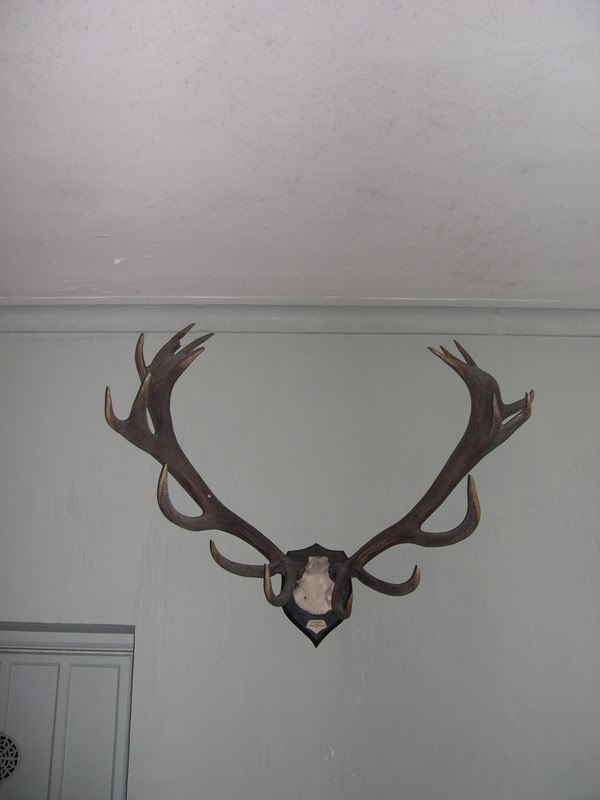 This is the final head  Bill's stag was much more likely to be a stag kept behind the wire with possibly some English park influence and some winter feeding. | |||
|
| One of Us |
<<<<<Bill Quimby is wrong in his comments about "mainland" influence if he is referring to mainland Europe. There is in fact very little influence from mainland Europe in any UK red deer. If he was referring to the UK mainland, well the part of Scotland where this stag was shot is a part of the mainland so I'm not sure what he means.>>>>> Sewinbasher: Many years ago, when I was editor of the SCI record books, the club received a suspicious entry for a red deer killed in Scotland. Its antlers were so outlandishly large that there was no way it could be a Scottish stag. It wasn’t. It later was learned that this particular animal had been brought over from Hungary and released among a herd of free-ranging hinds during the roar. The outfitter obviously was very good at staging the “hunt.†Although it did not take place inside an enclosure, it was as "canned" as anything could be. The SCI member who shot that giant deer had no inkling of the fraud, and he told about being marched up one hill and down another for days until his "trophy" was found. I suspect that to this day he is angry with SCI for not accepting his entry, and not at the outfitter who charged him a fortune to kill an over-aged stud from a fenced estate many hundreds of miles away. This incident and others involving the larger stags of the Cervus elaphus hippelaphus subspecies from Hungary, Poland, Bulgaria and elsewhere, and even the introduction of the genes of North American elk and British game parks deer with supercharged genetics, led to SCI’s trophy records committee drawing that line from Glasgow to Edinburgh. This was the committee's attempt to restrict its Scottish stag entries to the highlands -- and to isolate a region where certain practices were rampant at the time. Free-ranging deer taken from the highlands north of that line were henceforth categorized as “Scottish†stags in the SCI books. Those from south of that line were called “European†red deer and listed with the stags from the continent. To me, the antlers of Bill Berlat's stag are pure Scottish stag -- C.e. scoticus, the subspecies that zoologists say includes all naturally occuring stags throughout the British Isles. To me, they lack the length-- and appearance -- of antlers from stags whose ancestry includes genes from the continent. It's true that stags from the highlands rarely have crowns and typically are short, spindly things, but "rarely" and "typically" are the key words here. As you've correctly pointed out, when Scottish stags (even those from the highlands) are properly fed they are capable of growing some very good antlers. Bill Quimby | |||
|
| One of Us |
Bill, Canned hunts are abhorent and it is only the fact that foreign hunters are prepared to pay ludicrous amounts of money for big heads that they happen at all. Scotland hardly has any shortage of genuine wild red deer and any red deer hunt in Scotland based on a trophy fee should be treated with a large degree of suspicion. I accept what you say regarding C. elaphus scoticus as this is indeed the sub-species that encompasses all wild UK red deer and the majority of English park deer but drawing a line between Glasgow and Edinburgh does not achieve the objective of eliminating any but wild Scottish deer as there are plenty of questionable deer above that line and of course many pure Scottish deer to the south. In this respect Bill's stag is typical in as much as it has a head inclined to a symetrical 12 points with crowns at the top. However there is a huge difference in the appearance of a typical "Scottish" stag as opposed to stags from other areas of the UK, even where the wild deer are effectively of a pure indigenous UK strain. When we talk about a typical "Scottish" head we mean from the highlands of Scotland as opposed to C. elaphus scoticus. These heads are typically light and thin, seldom exceed about 14 points, have crowns at 10 - 12 points and have short brows, beys and treys compared to other UK red deer. Bill's stag is not typically Scottish highland for all the reasons previously given, primarily the split treys on both sides, although it may be more generally typically C. elephus scoticus but then 99% of UK red deer would be typical by this definition. Wild red deer from other areas of the UK (and even lowland Scotland) tend more to being multi-pointed, are much longer, bigger in mass and have longer tines with less tendancy to have a crown. This may well be because of park deer influences and also because of better feeding. Deer like Bill's may indeed be descended from some wild Scottish stock but once they are kept enclosed and fed during the winter they get better heads and this is why some UK members of this thread are saying that it is not a typical Scottish head. You are correct in saying that a few foreign red deer, English park (not game park) deer and even American elk have been used in the past to try and improve Scottish heads but usually without much success. Occasionally an East European maraloid tendency to have throwbacks rather than crowns is an indication that the genes are still there but this is uncommon. You also have to consider that there is no public access land in the UK for hunting and both wild and captive UK red deer populations have been managed for quality for in some cases hundreds of years and culling decisions are based on the animal's headgear with good animals not culled until they have started not to be able to hold their hinds during the rut. This is why we have such good quality animals in some of the parks and wild populations. For the rest of the UK the red deer are either from old indigenous populations like those in the West of England where the stag in my photos came from, where there has been little if any outside blood for over 1,000 years or, unless deliberately released, they have come from one of two other sources. The first source is from escapees from deer farms or parks and these are the most likely to carry foreign genes although still rare as English park deer brood stock provide big body weights without the hassle of importing foreign deer. The populations in most parts of England and Wales where there were no previous wild populations in recent times originate from deer farm/park escapees. The second source is from what are known as "carted hunts". These were stag hunts with hounds in areas where there were no wild red deer and over the past 250 years as many as 50 packs hunted deer in this way. Deer (both stags and hinds) were purchased from some of the English parks, typically Woburn, Windsor or Warnham, kept in captivity and then taken out and released solely for the purpose of being hunted and bought to bay by the hounds after which they were recaptured and returned to captivity either to run again or to breed from. In fact not many ran again as they learned that they were not in much danger and often refused to run. On some occasions these deer were not recaptured and left out where they formed the basis of a new population. Hunting the carted deer ceased about 45 years ago in the UK and hunting wild red deer with hounds ceased in 2006. The deer of East Anglia are from this source and started to produce huge heads in the 1950s. As some of the carted deer were purchased from Warnham Park it is no surprise that red deer from this area feature heavily in the top UK wild heads. | |||
|
| One of Us |
I, too, abhor canned hunts. And I was not defending the SCI line, only giving the history of how it came to be. Since its inception, I suppose some of the people who were the reason the line was drawn have moved their operations north. Our problem seems to be in the words "Scottish stag." After seeing Bill's antlers, I used those words to describe the appearance of a typical C.e. scoticus stag; and you restrict those words to the stags of the highlands. I can accept that. You are a resident of the Isles and although I am a student of the deer of the world all I know about those in the UK is what I have read and heard. However, I do have some knowlege of some of the things unscrupulous outfitters have been doing, and the ancestry of UK stags as you've described is far from complete. Bill Quimby | |||
|
| One of Us |
Wow!! I do know this, the haggis was excelent and it was neither canned or estate. I do plan to return to Scotland for #1, the haggis, #2, the excellent Scotch, #3 a stag that is unquestionably free range without a careabout antler size. A chap in Ireland has been writing me with some wonderful information that I will avail myself of once I get a bit more mobile. "When you play, play hard; when you work, don't play at all." Theodore Roosevelt | |||
|
| One of Us |
OK Bill, fair enough! As a last word if you ever see a set of antlers like the one in my post on a stag claiming to be Scottish (from Scotland) then you are either talking to a liar or someone who has been on a hunt on enclosed land with too many dollars for his own good. I checked through the measurements of the top hundred or so New Zealand reds and this stag would have been right up there with most of them. As a student of deer, if you have not already seen it it might be worth you getting hold of a copy of The Whitehead Encyclopaedia of Deer by the late G.Kenneth Whitehead, possibly the World's leading authority on deer. He also published many other books on UK deer stalking and deer distribution, including the origins of the various herds and records of animals introduced from other sources. Another expert on C.elaphus in particular is D. Bruce Banwell of New Zealand. He has also written extensively about the genetic provenance of many World red deer populations. | |||
|
| One of Us |
Bill, I wasn't trying to denigrate your stag which you were justifiably delighted with. It is just that many from outside the UK do not fully understand what Sottish deerstalking is all about and in fact the wild deer of highland Scotland have the poorest body weights and antlers of any red deer in the UK due to the very poor feeding conditions and treeless environment. No matter what anyone says your stag had a head that was unlike what you would expect of a wild Scottish Highland red stag and was much more typical of a lowland stag from England showing more tines and weight as a result of better genetics and feeding. It may well have been born and bred on the estate but he had almost certainly not got pure Scottish ancestry and/or had received some supplementary feeding through the winter. It's a bit like comparing a bull moose from Maine with its cousin from Alaska although I recognise in this case there is a difference in sub-species. Too many UK hunts are canned these days and by that I mean hunting for deer that are enclosed within a retaining fence and not 100% free-ranging. These are nearly always heavier and carry better heads than their wild cousins. If you come to Scotland again try and get a hunt with a highland estate. They will take you up onto the open hill to stalk a wild stag. Not all of them involve hours of trekking uphill and the less fit clients can get a ride on an Argocat for much of the way. You will not hear much talk of trophy sizes and you will be required to shoot the stag that the stalker selects but the experience is in the tradition, culture and people not the size of the trophy. Long range shooting is not encouraged as the name of the sport is deer stalking not deer shooting and you will often walk for several hours after spotting the target stag and then crawl the last few hundred yards to get into a shooting position. Shots are usually taken at ranges between 50 yards and 200 yards but mostly around 100/150 yards and you will not be allowed to shoot at a moving animal unless you have already wounded it. Except for the range of the shot it is more like sheep hunting in the States than deer hunting. I do hope that you come again as you obviously enjoyed the experience you've had so far. Another deer that we have and you don't is the roe deer which is also indigenous but much smaller than the reds and actually the favourite deer of many UK stalkers. Roe are usually found at much lower levels than reds and are easier to stalk. They are found all over the UK and there is scarcely any area without some these days. | |||
|
| One of Us |
>>>>>>As a student of deer, if you have not already seen it it might be worth you getting hold of a copy of The Whitehead Encyclopaedia of Deer by the late G.Kenneth Whitehead, possibly the World's leading authority on deer. He also published many other books on UK deer stalking and deer distribution, including the origins of the various herds and records of animals introduced from other sources. Another expert on C.elaphus in particular is D. Bruce Banwell of New Zealand. He has also written extensively about the genetic provenance of many World red deer populations>>>>> I was fortunate to meet Mr. Whitehead and spend a bit of time talking deer with him at the World Hunting Congress in Madrid in the late 1980s. We also corresponded some, and I bought an article or two from him when I edited Safari Magazine. I have all of his books, including the Encylopedia. I also have most of the books on deer by Valerius Geist (whom I consider more authoritative than Whitehead) and many earlier authors. I have never heard of Banwell, but I will attempt to track down his stuff. Bill Quimby | |||
|
| One of Us |
<<<<<<<"Too many UK hunts are canned these days and by that I mean hunting for deer that are enclosed within a retaining fence and not 100% free-ranging. These are nearly always heavier and carry better heads than their wild cousins.">>>>>>> Sewinbasher: We again have a problem with nomenclature. To me, "canned" means something similar to a common practice across South Africa and in a few places in Namibia: a wildebeest or some other large antelope is killed and a purposely-starved lion that was raised in a small pen is brought in and released on its carcass. A client is rushed to the scene and he kills the lion, never knowing that his cat is fresh out of a cage. Some outfitters in the USA and Argentina have done similar things with mountain lions (pumas). Canned hunts similar to the above have also been done (and are being done) with red deer in Scotland, New Zealand and elsewhere. The unfortunate targets barely hit the ground somewhere before an unsuspecting client shoots them. A small industry has developed that includes breeders of elk and red deer and brokers who ship live animals to game farm owners all over the world. With enough money, a client can "collect" a world-record-class animal anywhere he chooses. All he has to do is offer lots of cash for an unusually large specimen, and there will be someone who will find and import it for him to shoot. Canned "hunts" do not have to be done inside enclosures. They sometimes are conducted outside with animals that are drugged, hungry or thirsty to ensure they stick around long enough for the client to find them. I do not consider the shooting of deer from closely managed herds inside game parks and other enclosures to be "canned" if these deer are indigenous to the region and were born and raised inside those enclosures. The enclosures must be large enough and have enough cover to provide a hunting experience, and the client also must know that he is hunting behind wire (certain outfitters are quite adept at hiding this fact). Under your definition, virtually all hunting in South Africa would be "canned" because there are few places where hunting occurs in that country that are not behind high wire. Bill Quimby | |||
|
| One of Us |
Fair enough, I accept what you say completely. There are very few if any canned hunts by your definition in the UK. What there is are hunts inside fenced areas for trophy animals which I was calling canned hunts in the mistaken belief that this is what you called them. I'm aware of the canned hunts that you refer to in New Zealand and Africa. Wild animals for hunting are not usually shipped into the UK from other countries but are nurtured in the enclosure in which, or close to the one in which, they are eventually shot. Although these will usually be shot inside their enclosure they might occasionally be released into the open country adjacent to the enclosure to be shot. Our laws on releasing alien species, live animal imports and the safety issues of transporting mature and antlered stags would make this very difficult and we have park red stags that are as big as anything that might be imported and the need to import is hard to understand. For example it would be illegal to release a Pere David deer into any unenclosed land in the UK for any purpose, including to be shot. You could only shoot such an animal in enclosed ground. I think we are agreed that both these practices are undesirable and any animal shot in this way is rightly excluded from any record books. If you Google D. Bruce Banwell you will find a fair amount of information on him. He frequently writes on a scientific basis for the the in house magazine of the British Deer Society and has published many books about British and NZ deer. I have three of his books devoted to the details of the best recorded New Zealand trophies for red deer, fallow deer, American elk, moose, sambhar, rusa, whitetail and sika deer. | |||
|
| One of Us |
Virtually every country has laws regulating the importation of wildlife. Although I cannot cite specific instances of those laws being twarted, I can assure you that it is happening. With the amount of money involved it wuld be safe to say such laws only deter the honest. Not certain if it has hit the UK yet, but artificial insemenation of white-tailed deer is common on U.S. game ranches. Red deer are raised commercially on five continents, and I suppose semen from super studs can be shipped anywhere. I have ordered two of Barwell's books from a New Zealand bookseller I found on the internet. Thanks for alerting me about him. Bill | |||
|
| One of Us |
I'll do some checking on the AI situation but if anyone wants a great stud stag they just buy a stag from Warnham Park. I was very disappointed to see that even Warnham have succumbed to allowing their surplus stags to be shot as trophies but if someone will pay who can blame them. The animal in the link will give you some idea of why Warnham stock is found worldwide. http://www.warnhampark.com/trophy.php | |||
|
| Powered by Social Strata |
| Please Wait. Your request is being processed... |
|
 The Accurate Reloading Forums
The Accurate Reloading Forums  THE ACCURATE RELOADING.COM FORUMS
THE ACCURATE RELOADING.COM FORUMS  Hunting
Hunting  South American Big Game Hunting
South American Big Game Hunting  Scotland photos here because my amigos are here
Scotland photos here because my amigos are here

Visit our on-line store for AR Memorabilia

